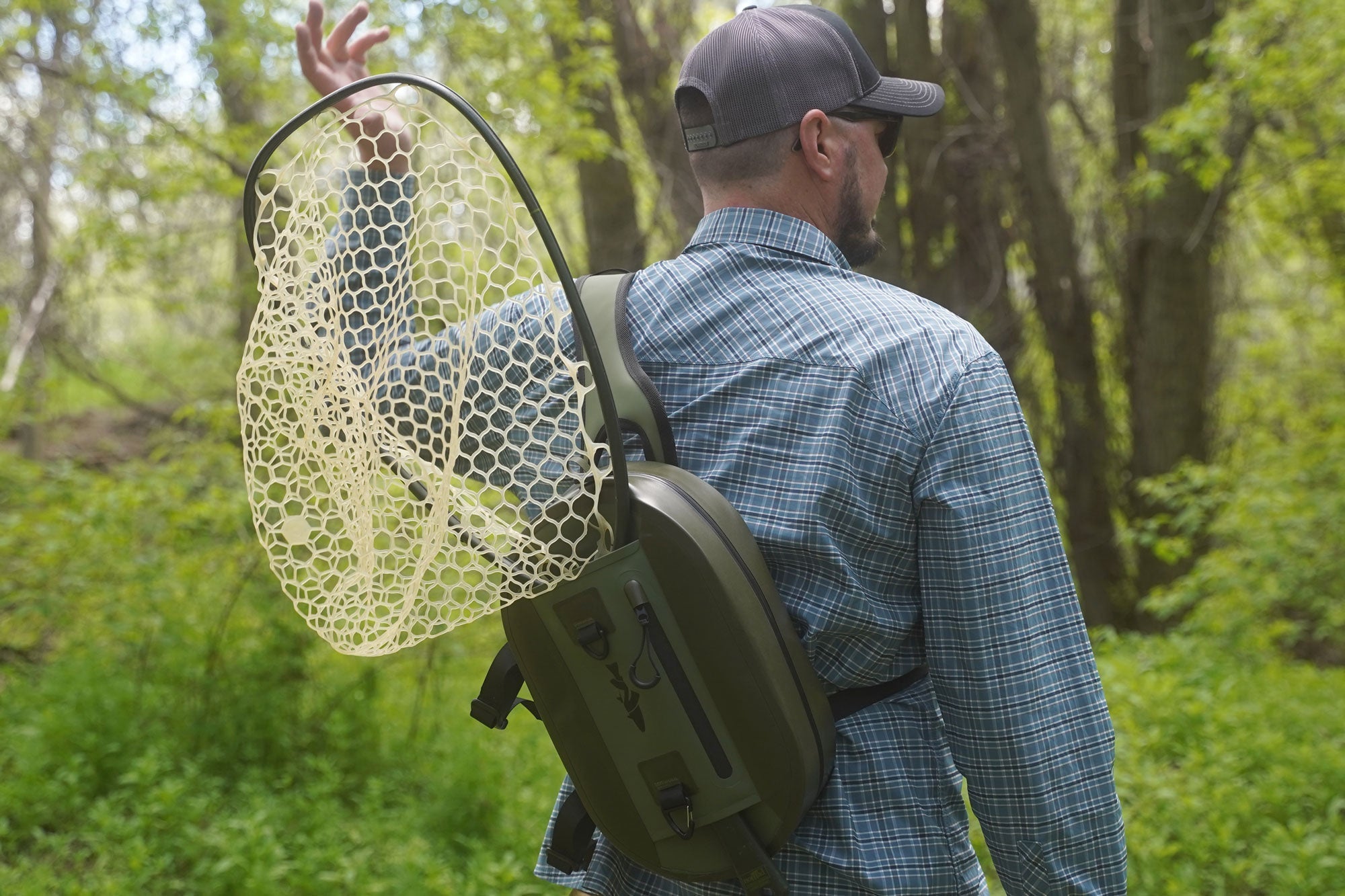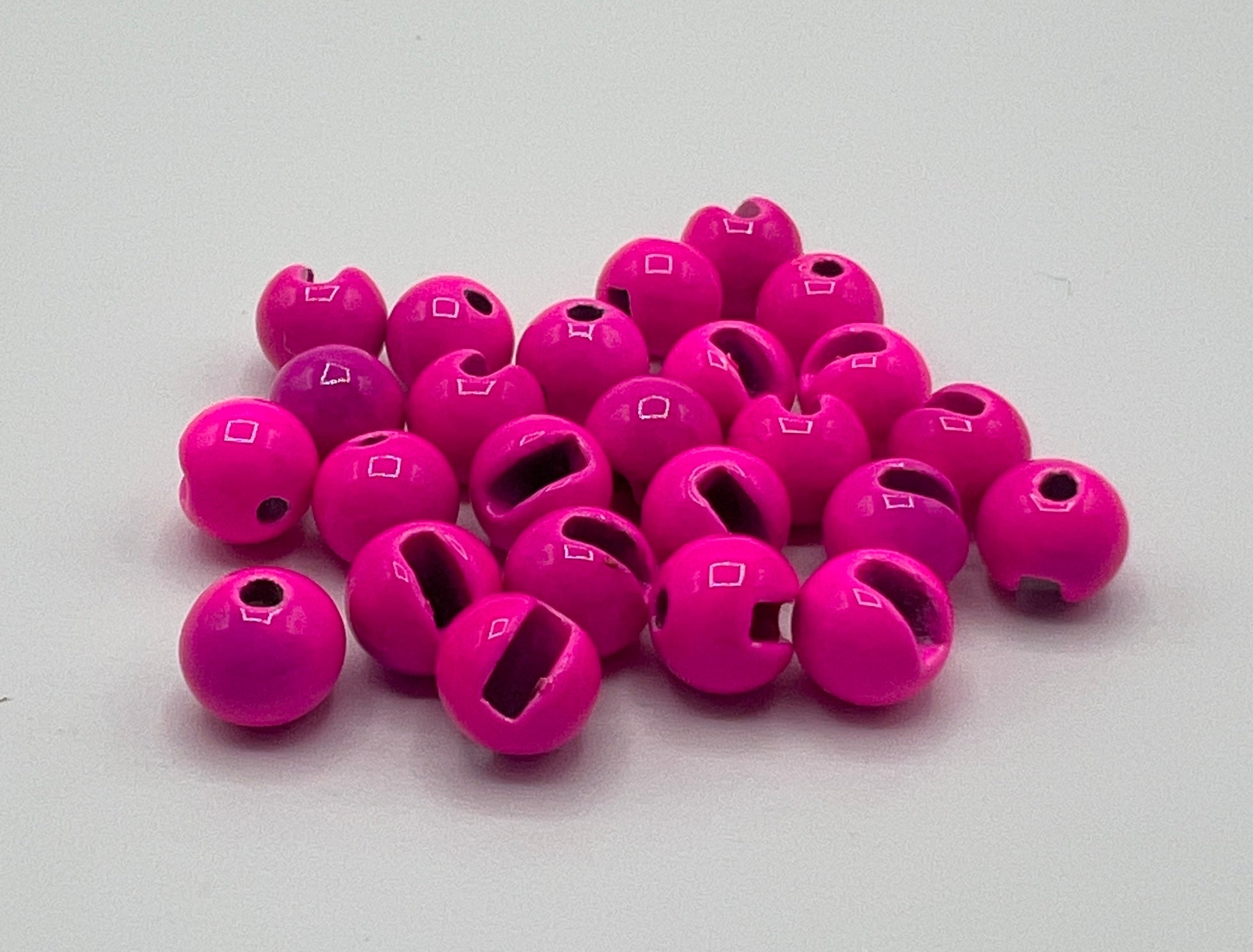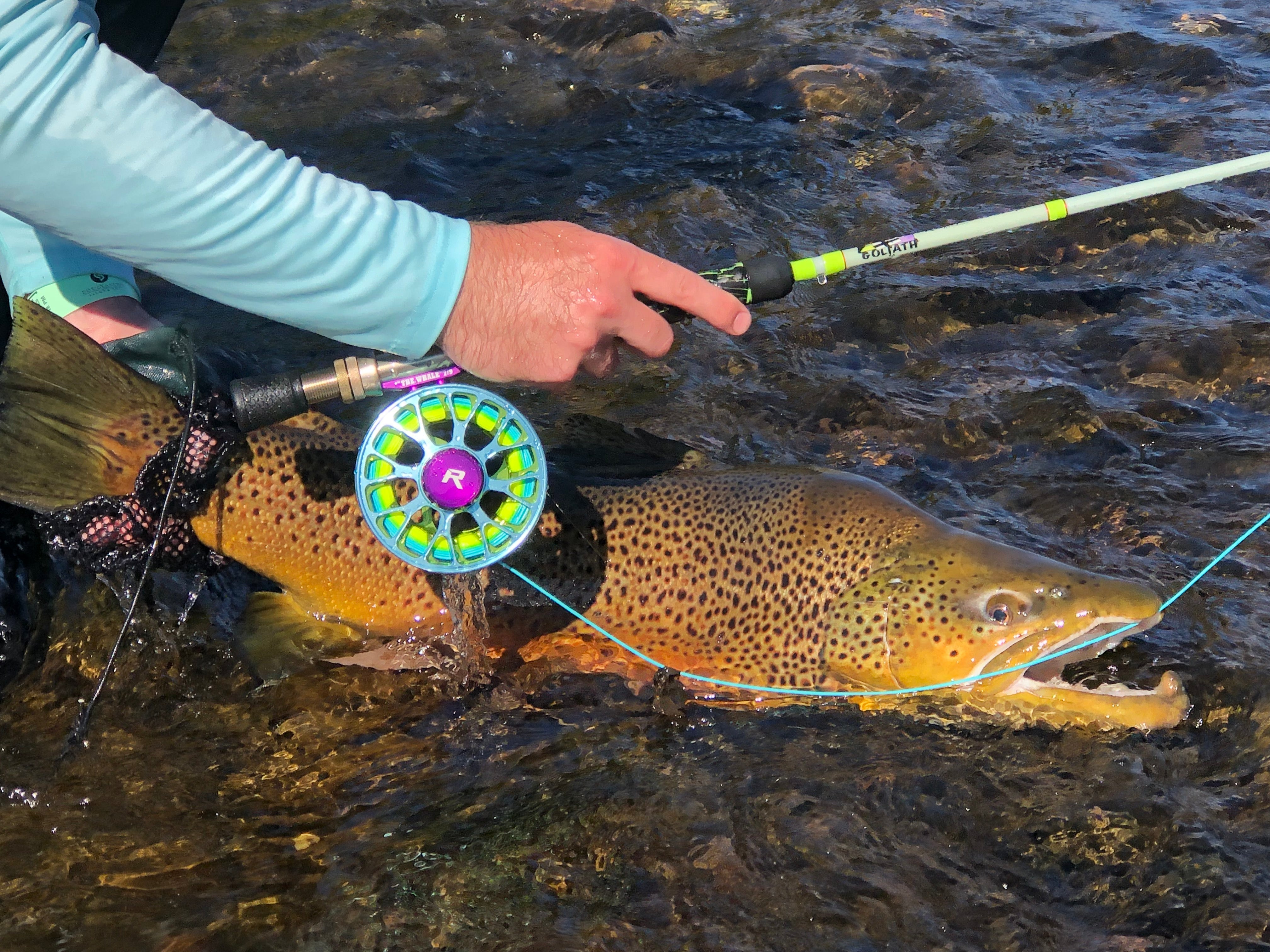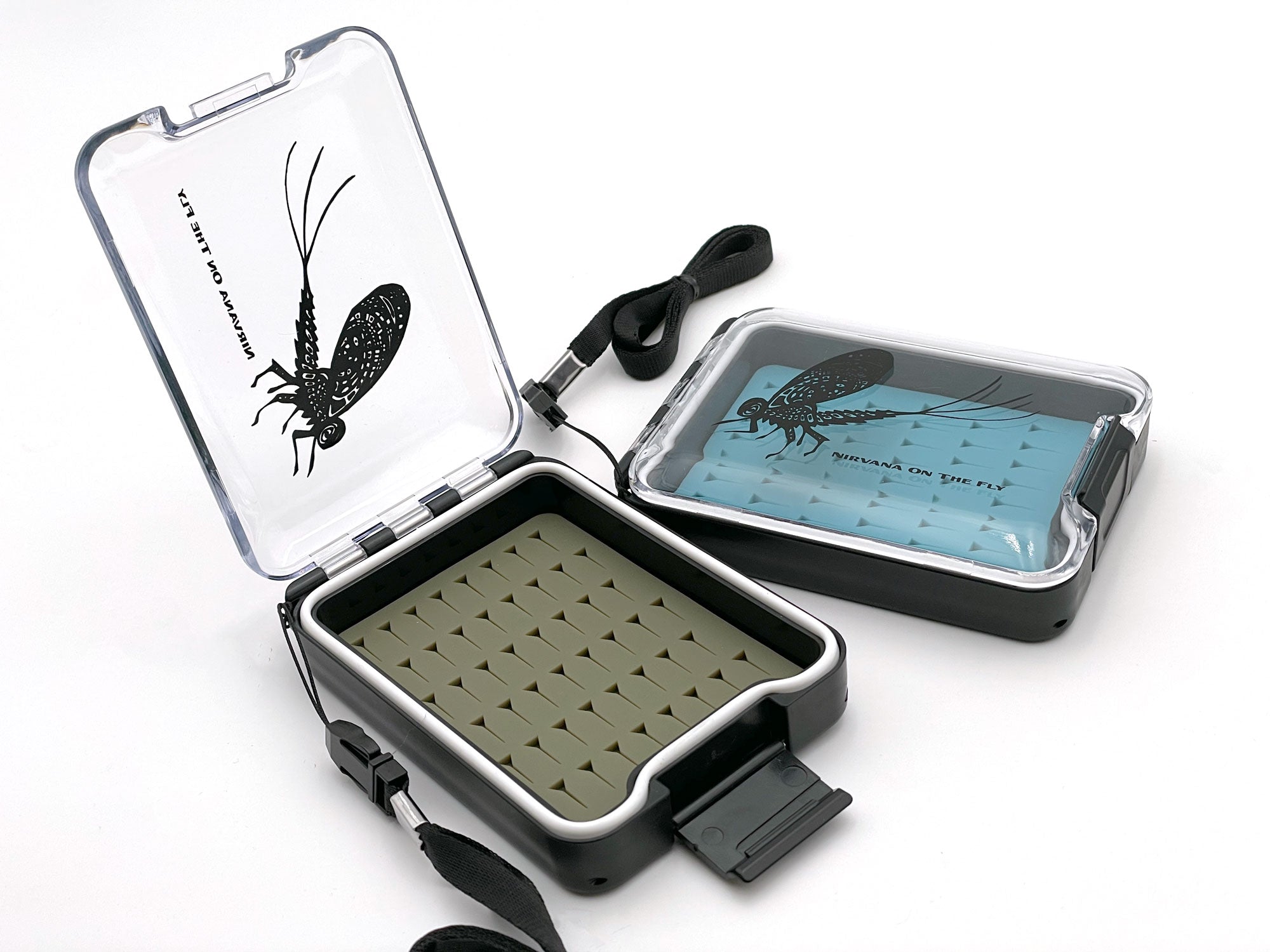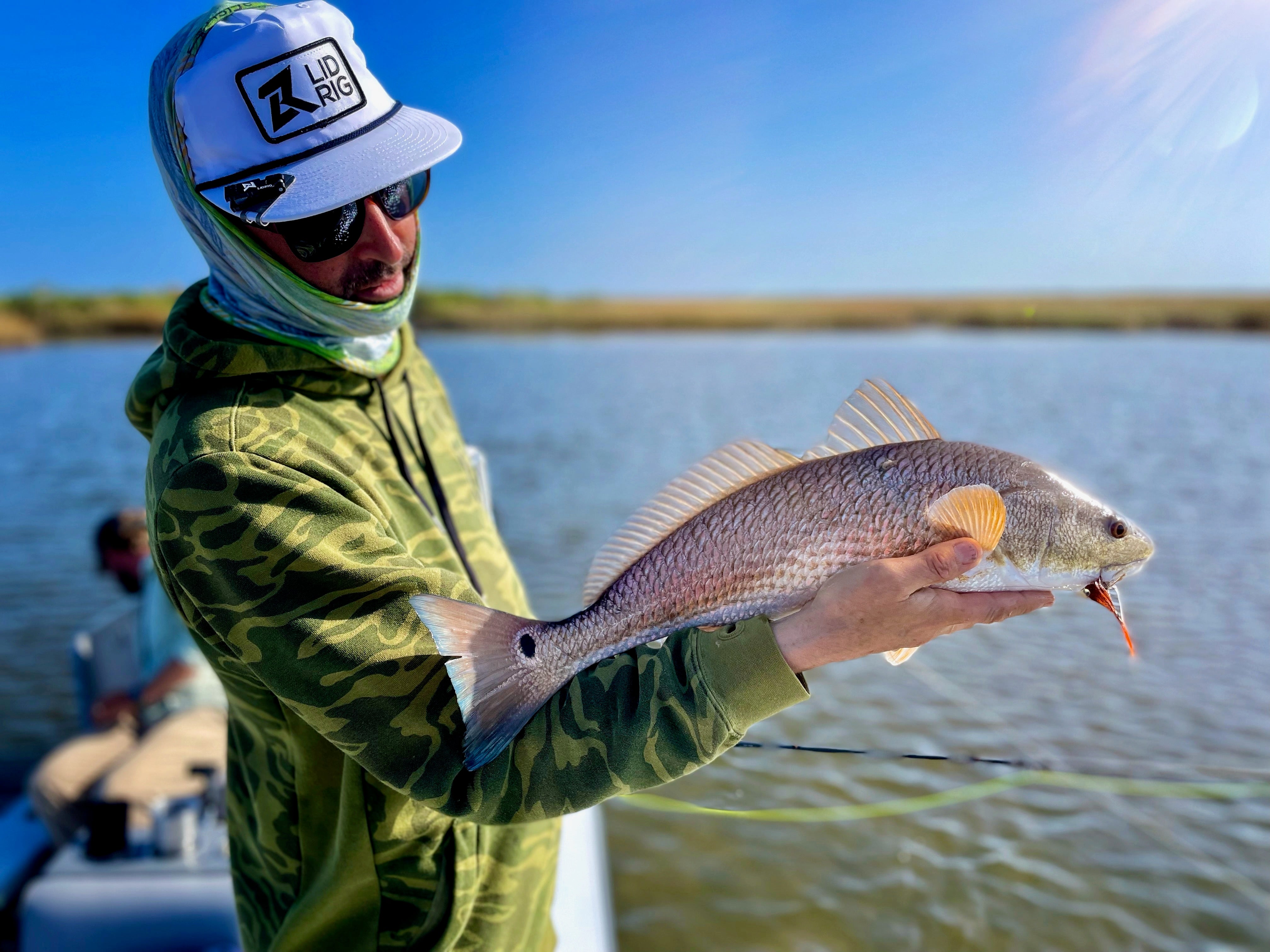The Revolution from the UK: Patterns That Changed Everything
Boobies and Blobs represent one of the most significant innovations in modern stillwater fly fishing. Developed in the UK and refined on British reservoirs, these unconventional patterns have revolutionized how anglers approach challenging stillwater conditions. While they may not look like anything in nature, their effectiveness is undeniable – triggering aggressive strikes from trout when traditional imitative patterns fail.
These patterns excel in situations where fish are feeding on daphnia clouds, during poor visibility conditions, or when trout simply refuse conventional offerings. The key to success with Boobies and Blobs lies in understanding when and how to use these aggressive attractor patterns for maximum stillwater fly fishing effectiveness.
WATCH: Rob Edmunds demonstrates Boobies and Blobs techniques on Draycote Water
Understanding Boobies: The Floating Attractor
What Makes a Booby
Construction Elements:
- Foam Eyes: Two foam balls that provide buoyancy
- Hook Design: Usually #8-12 hooks for substantial profile
- Body Materials: Chenille, fritz, or synthetic materials
- Tail: Marabou or synthetic fibers for movement
- Weight Consideration: Relies on sinking line for depth
Booby Behavior in Water:
- Neutral Buoyancy: Foam eyes counteract hook weight
- Erratic Action: Unpredictable movement triggers strikes
- Depth Control: Sinking line determines fishing depth
- Visibility: Bright colors attract attention from distance
Popular Booby Patterns
Classic White Booby:
- Eyes: White foam balls
- Body: White chenille or fritz
- Tail: White marabou
- Best Use: Cloudy water and overcast conditions
Orange Blob Booby:
- Construction: Orange materials throughout
- Visibility: Excellent in stained water
- Trigger: High visibility creates aggressive response
- Versatility: Works in various water conditions
Black Booby:
- Stealth: Less visible but highly effective
- Silhouette: Creates distinctive underwater profile
- Conditions: Clear water and bright light
- Action: Subtle but triggers curiosity strikes
Cats Whisker Booby:
- Innovation: Combines traditional pattern with foam eyes
- Materials: Yellow chenille body with crystal flash wing
- Effectiveness: Proven reservoir pattern with Booby twist
- Applications: Excellent searching pattern
Understanding Blobs: The Daphnia Imitator
The Science Behind Blobs
Daphnia Connection:
- Zooplankton Clouds: Blobs imitate concentrated daphnia
- Size Matching: Small flies suggest individual organisms
- Bulk Feeding: Fish feeding on daphnia clouds
- Color Significance: Pink and orange match natural daphnia
Blob Construction:
- Fritz Material: Sparkly, translucent synthetic material
- Simple Design: Often just fritz wrapped on hook
- Size Range: #10-16 hooks most common
- Weight Options: Weighted and unweighted versions
Essential Blob Patterns
Original Orange Blob:
- Material: Bright orange fritz
- Hook: #10-14 standard wet fly hook
- Simplicity: Just fritz wrapped around hook shank
- Effectiveness: Original and still most productive
Pink Blob:
- Color: Hot pink fritz material
- Application: Excellent in clear water conditions
- Trigger: High visibility creates reaction strikes
- Versatility: Works throughout the season
Fluorescent Green Blob:
- Visibility: Excellent in low light conditions
- Materials: Bright green fritz
- Best Use: Early morning and evening fishing
- Innovation: Modern color that triggers strikes
Multi-Color Blobs:
- Combination: Multiple fritz colors on single fly
- Theory: Increases trigger potential
- Construction: Blend colors for varied appearance
- Experimentation: Allows for creative variations
WATCH: Tying effective Booby and Blob patterns for stillwater
Equipment and Tackle for Booby and Blob Fishing
Rod and Line Requirements
Rod Specifications:
- Length: 9-10 feet for better line control
- Weight: 7-8 weight for casting large flies and lines
- Action: Fast action for accurate casting
- Backbone: Strong enough for aggressive retrieves and large fish
Line Selection:
- Sinking Lines: Essential for Booby fishing
- Sink Rates: Di-3 to Di-7 for various depths
- Intermediate: Excellent for Blob fishing
- Floating: Used with weighted Blobs in shallow water
Leader Systems:
- Short Leaders: 3-6 feet for sinking line fishing
- Heavy Tippet: 8-12 lb for aggressive fishing
- Fluorocarbon: Invisible properties important
- Simple Rigs: Avoid complex setups with these patterns
Specialized Equipment
Landing Nets:
- Large Size: Accommodate excited fish and bulky flies
- Rubber Mesh: Protects fish and prevents hook tangling
- Long Handle: Reach fish from boat or float tube
- Magnetic Release: Quick access during fast action
Fly Boxes:
- Compartmentalized: Separate spaces for different patterns
- Waterproof: Protection in challenging conditions
- Easy Access: Quick pattern changes during active fishing
- Capacity: Room for multiple color variations
Booby Fishing Techniques
The Classic Booby Method
Setup Process:
- Sinking Line: Attach appropriate sink rate line
- Short Leader: 4-6 feet of fluorocarbon
- Booby Selection: Choose pattern for conditions
- Depth Calculation: Count down to desired depth
Basic Technique:
- Cast and Sink: Allow line to reach desired depth
- Static Phase: Let Booby suspend motionless
- Retrieve Variation: Slow pulls with pauses
- Strike Detection: Feel for any resistance or weight change
Advanced Booby Strategies
The Hang Method:
- Concept: Allow Booby to hang stationary off bottom
- Execution: Count down to bottom, then lift slightly
- Effectiveness: Imitates suspended prey item
- Patience: Requires stillwater fly fishing patience
Booby Stripping:
- Active Retrieve: Fast strips followed by pauses
- Trigger Response: Erratic movement provokes strikes
- Speed Variation: Alternate fast and slow retrieves
- Stop-Start: Sudden stops often trigger immediate strikes
Depth Variation:
- Multiple Depths: Fish different levels systematically
- Thermocline Focus: Target thermal break areas
- Structure Related: Fish Boobies near underwater features
- Following Fish: Adjust depth based on fish location
WATCH: Advanced Booby fishing techniques and retrieves
High-Speed Blob Techniques
Fast Retrieve Method:
- Concept: Rapid strips imitating fleeing daphnia cloud
- Execution: Continuous fast strips with occasional pauses
- Line Choice: Intermediate or slow sink lines
- Best Conditions: When fish are feeding aggressively
Stop-Start Technique:
- Pattern: Fast strips followed by complete stops
- Theory: Stopping fly triggers predatory response
- Timing: Vary pause length for different responses
- Strike Detection: Most strikes occur during pause
Slow Blob Presentations
Daphnia Drift:
- Natural Movement: Very slow retrieve mimicking daphnia clouds
- Line Control: Use intermediate line for controlled depth
- Patience: Allow Blob to move naturally with water
- Observation: Watch for subtle takes and line movement
Static Blob:
- Suspension: Allow Blob to hang motionless
- Depth: Target known fish holding areas
- Duration: Extended periods without movement
- Strike Alert: Be ready for sudden aggressive takes
Seasonal Applications for Stillwater Fly Fishing
Spring Booby and Blob Tactics
Early Season Opportunities:
- Cold Water: Fish are lethargic, need attracting
- Bright Patterns: High visibility in cold, clear water
- Slow Retrieves: Match fish metabolism to water temperature
- Deep Fishing: Target fish in deeper, more stable water
Equipment Adjustments:
- Heavier Lines: Get down to fish quickly in cold water
- Bright Colors: Orange and pink most effective
- Patient Approach: Extended periods between takes
- Warm-Up Strategy: Fish during warmest parts of day
Summer Strategies
Hot Weather Applications:
- Deep Water: Fish seek cooler temperatures
- Fast Retrieves: Match active fish behavior
- Multiple Patterns: Variety in fly box essential
- Early/Late Fishing: Avoid midday heat when possible
Daphnia Season:
- Peak Effectiveness: Blobs excel during daphnia blooms
- Color Matching: Pink and orange match natural daphnia
- Fast Retrieves: Imitate concentrated food source
- Location: Focus on areas with visible daphnia concentrations
Fall Fishing Excellence
Pre-Winter Feeding:
- Aggressive Fish: Fish feed heavily before winter
- Large Patterns: Fish willing to take substantial meals
- Extended Sessions: Longer fishing opportunities
- Weather Windows: Fish stable weather periods
Technique Refinements:
- Size Up: Larger Boobies and Blobs
- Aggressive Retrieves: Match fish feeding urgency
- Deep Focus: Fish concentrate in deeper areas
- Pattern Persistence: Stick with successful patterns longer
WATCH: Seasonal strategies for Boobies and Blobs
When to Fish Boobies and Blobs
Ideal Conditions
Water Conditions:
- Stained Water: Reduced visibility makes bright patterns effective
- Overcast Days: Low light enhances pattern visibility
- Choppy Water: Surface disturbance helps conceal angler
- Post-Storm: Disturbed conditions favor aggressive patterns
Fish Behavior Indicators:
- Refusal of Naturals: When traditional patterns fail
- Aggressive Feeding: Fish actively hunting in open water
- Daphnia Presence: Visible zooplankton concentrations
- Depth Fishing: When fish are holding in deeper water
Timing Considerations
Daily Patterns:
- Early Morning: Low light favors bright patterns
- Midday: Deep fishing with sinking lines
- Evening: Surface activity may favor floating presentations
- Night Fishing: Large Boobies excel in darkness
Seasonal Timing:
- Spring: Ice-out periods when fish are hungry
- Summer: Daphnia bloom periods
- Fall: Pre-winter feeding opportunities
- Winter: Limited but effective during mild periods
Advanced Techniques and Variations
Multi-Fly Systems
Booby-Blob Combinations:
- Point Fly: Booby on point for depth and attraction
- Dropper: Blob 3-4 feet above for variety
- Retrieve: Varied speeds to trigger different responses
- Effectiveness: Covers multiple feeding preferences
Attractor Chains:
- Multiple Boobies: Different colors for maximum attraction
- Spacing: 4-5 feet between flies
- Retrieve: Consistent fast strips
- Theory: Creates feeding competition response
Boat vs. Shore Applications
Boat Fishing Advantages:
- Deep Water Access: Reach fish in open water
- Position Control: Precise positioning over structure
- Line Management: Better control of sinking lines
- Multiple Angles: Fish same area from different approaches
Shore Fishing Adaptations:
- Weighted Blobs: Get depth without sinking lines
- Long Casts: Reach deeper water from shore
- Structure Focus: Target near-shore drop-offs
- Retrieve Angles: Use shoreline structure for varied presentations
Troubleshooting Common Problems
When Boobies and Blobs Don't Work
Pattern Adjustments:
- Size Changes: Try larger or smaller patterns
- Color Variations: Switch to different color schemes
- Speed Changes: Alter retrieve speeds dramatically
- Depth Adjustments: Fish different levels in water column
Technique Modifications:
- Line Changes: Switch between sinking rates
- Leader Adjustments: Vary leader length and strength
- Retrieve Styles: Try completely different presentations
- Location Changes: Move to different areas
Technical Challenges
Casting Large Flies:
- Open Loops: Use wider casting loops for bulky flies
- Timing: Slower casting rhythm for heavy patterns
- False Casting: Minimize false casts to prevent tangles
- Wind Management: Cast with wind when possible
Strike Detection:
- Line Watching: Monitor line behavior constantly
- Hand Sensitivity: Develop feel for subtle takes
- Rod Position: Maintain optimal angle for strike detection
- Concentration: Focus entirely on fishing during active periods
WATCH: Troubleshooting Booby and Blob fishing problems
Building Booby and Blob Skills
Progressive Learning Approach
Beginner Phase:
- Basic Patterns: Start with simple, proven designs
- Single Fly: Master one technique before adding complexity
- Easy Conditions: Fish during optimal weather and water conditions
- Patience: Allow time to develop confidence in techniques
Intermediate Development:
- Pattern Variety: Expand collection of effective patterns
- Multi-Fly Rigs: Add complexity with multiple fly systems
- Condition Adaptation: Fish various weather and water conditions
- Retrieve Mastery: Develop full range of retrieve techniques
Advanced Mastery:
- Innovation: Develop personal pattern variations
- Teaching: Share techniques with other anglers
- Condition Reading: Predict when techniques will be most effective
- Integration: Combine with other stillwater techniques
Practice Opportunities
Ideal Learning Waters:
- Productive Reservoirs: Waters known for Booby and Blob success
- Varied Conditions: Practice in different weather and water states
- Fish Populations: Healthy fish populations for consistent practice
- Access: Easy access for regular practice sessions
Skill Development Exercises:
- Retrieve Practice: Master all retrieve variations
- Depth Control: Learn precise depth management
- Pattern Testing: Compare effectiveness of different patterns
- Condition Correlation: Track success with environmental factors
The Controversial Effectiveness
Boobies and Blobs remain controversial among traditionalists, but their effectiveness is undeniable. These patterns solve specific problems in stillwater fly fishing – triggering strikes when fish refuse naturals, working in poor visibility conditions, and imitating concentrated food sources like daphnia clouds.
The key to success with these patterns lies in understanding when and how to use them appropriately. They're not replacements for traditional techniques but rather powerful tools for specific situations. Master Boobies and Blobs, and you'll have solutions for some of stillwater fishing's most challenging scenarios.
Remember that these techniques represent innovation in stillwater fly fishing. While they may not look like traditional flies, they solve real problems and catch fish consistently. The best stillwater anglers use every effective technique in their arsenal, and Boobies and Blobs have earned their place among essential stillwater patterns.
Ready to add these controversial but effective patterns to your stillwater arsenal? Start with basic orange and pink patterns, practice with sinking lines, and prepare for aggressive strikes when traditional methods fail. The fish are waiting for anglers brave enough to try something different.


